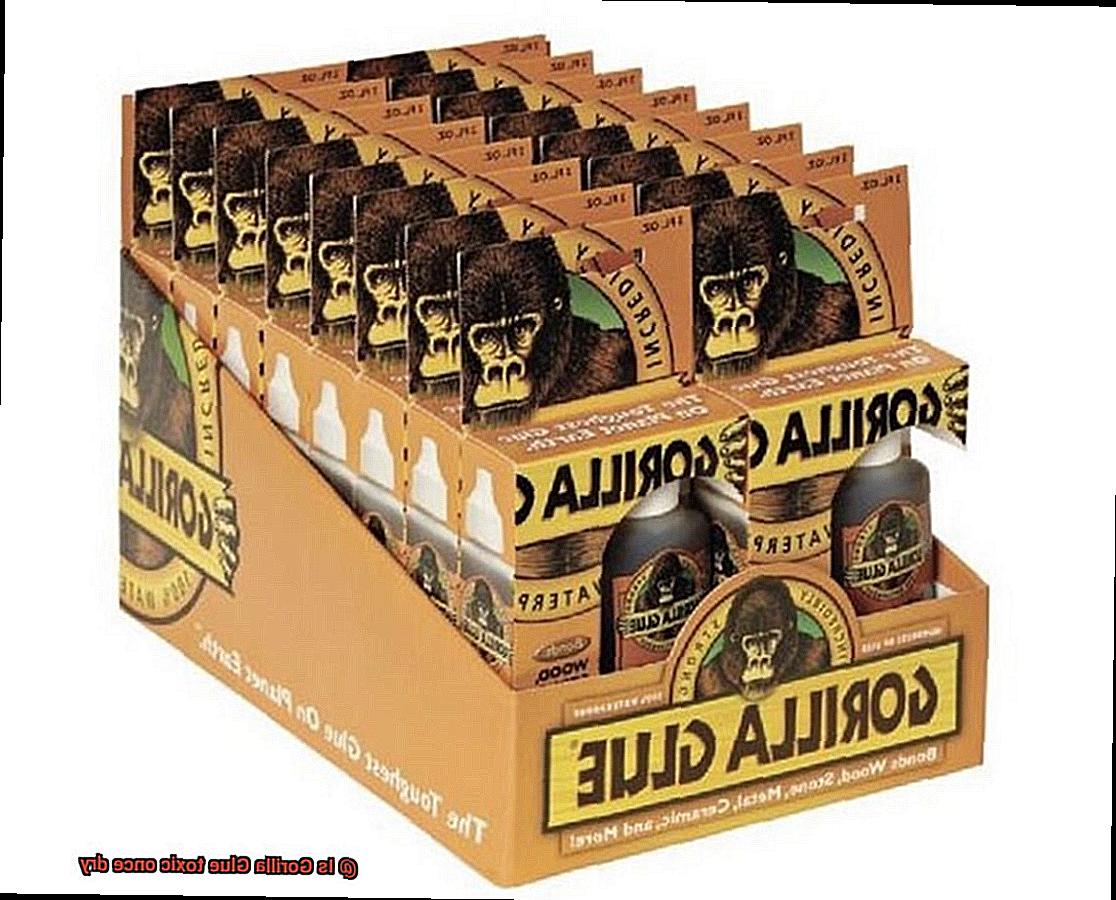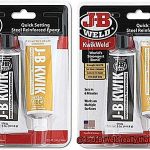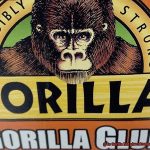Ever wondered if Gorilla Glue becomes toxic once it dries? Well, you’re in luck because we’re about to dive deep into this intriguing topic.
We’ll uncover the truth behind whether or not this popular adhesive poses any risks once it’s dried. So, get ready to satisfy your curiosity with all the juicy details about the toxicity of Gorilla Glue.
Sit back, relax, and let’s embark on this fascinating journey together.
The Ingredients of Gorilla Glue
Contents
- 1 The Ingredients of Gorilla Glue
- 2 The Curing Process of Gorilla Glue
- 3 The Strength and Durability of Cured Gorilla Glue
- 4 Safety Measures When Using Gorilla Glue
- 5 Potential Health Risks from Un-Cured Gorilla Glue
- 6 Different Types of Gorilla Glue Formulations
- 7 Environmental Impact of Using Gorilla Glue
- 8 Conclusion
Gorilla Glue, a renowned adhesive celebrated for its exceptional bonding capabilities, contains a well-balanced blend of ingredients that contribute to its remarkable strength and durability. The composition of Gorilla Glue may slightly vary depending on the specific type, but the fundamental ingredients remain consistent.
Polyurethane, a prominent component of Gorilla Glue, plays a pivotal role in providing the adhesive with its robust bonding properties. Known for its resilience and resistance to moisture, polyurethane is a polymer that ensures the adhesive’s longevity and effectiveness.
Diphenylmethane diisocyanate (MDI) is another key ingredient found in Gorilla Glue. MDI acts as a crosslinking agent, reacting with polyols to form polyurethane. This interaction strengthens the adhesive bond and enhances its performance. It is important to note that while MDI can be hazardous in its liquid state, it becomes chemically inert once cured and dried, significantly reducing any potential risks.
Gorilla Glue also incorporates a catalyst or curing agent that triggers the chemical reaction between polyurethane and MDI. This catalyst expedites the drying and curing process, enabling the adhesive to bond quickly and efficiently.
Additionally, Gorilla Glue may contain additives such as solvents and stabilizers. These additives are incorporated to improve the adhesive’s viscosity, prolong its shelf life, and enhance its handling characteristics.
When used according to the manufacturer’s instructions, Gorilla Glue is generally regarded as safe and non-toxic once fully cured and dried. The polyurethane and MDI components become chemically inert during the curing process, minimizing any potential health risks. However, it is vital to exercise caution when handling Gorilla Glue, as it is designed for external use only and should not be ingested or come into contact with eyes or skin.
The Curing Process of Gorilla Glue
The curing process of Gorilla Glue is a captivating transformation, turning this adhesive into a formidable and long-lasting bond. Let’s delve into the process, exploring its impact on strength and durability:
- Polymerization: When Gorilla Glue touches a surface, it initiates a chemical reaction known as polymerization. This reaction occurs when the glue encounters moisture from the air or the applied surface.
- Bonding: As the glue cures, its molecules intertwine, forging lengthy chains. This bonding procedure creates a potent and durable adhesive capable of withstanding stress and strain.
- Expansion: An intriguing characteristic of Gorilla Glue is its propensity to expand and foam during the curing process. This expansion fills gaps and irregularities on the surface, resulting in a more secure bond.
- Waterproof and weather-resistant: Once fully cured, Gorilla Glue forms a waterproof and weather-resistant bond. It bravely faces exposure to moisture, temperature fluctuations, and even outdoor conditions.
- Hardness and rigidity: After complete curing, Gorilla Glue solidifies, becoming hard and rigid. This resilient nature contributes to its strength and endurance, making it suitable for a wide array of applications.
- Handling precautions: While dry Gorilla Glue is safe and non-toxic, uncured glue demands careful handling. It may cause skin and eye irritation; hence, it is recommended to wear gloves and protective eyewear during application.
- Removal challenges: Once Gorilla Glue has fully cured, undoing or removing it becomes difficult. If excess glue finds its way onto unwanted surfaces, sanding or scraping might be necessary to eliminate it.
The Strength and Durability of Cured Gorilla Glue
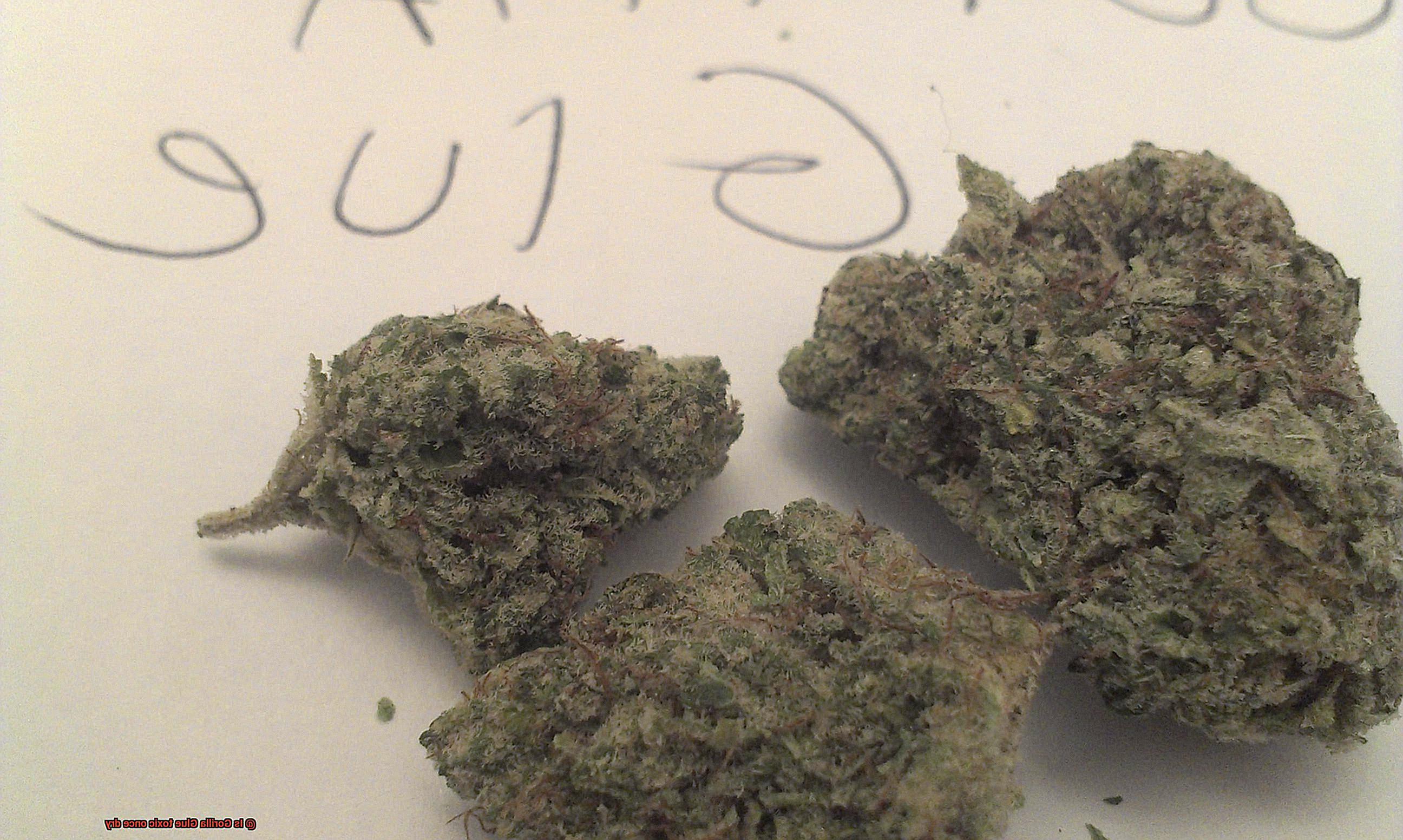
The strength and durability of cured Gorilla Glue are truly remarkable. This adhesive is known for its ability to create a bond that can withstand heavy loads and stress, making it a reliable choice for various applications.
Gorilla Glue’s strength is not limited to specific materials. It can bond various surfaces such as wood, metal, glass, ceramic, and stone. This versatility makes it an invaluable adhesive for woodworking, construction, automotive repairs, and DIY projects.
Independent laboratory tests have proven the exceptional strength of Gorilla Glue’s bond. In fact, in many cases, the bond created by this glue is even stronger than the materials being bonded together. How does it achieve this incredible strength? Gorilla Glue has the ability to penetrate porous surfaces like wood, seeping into the fibers and creating an adhesive bond that is incredibly robust.
But strength is not the only quality that sets Gorilla Glue apart. It also offers excellent resistance to impact and vibration. This means that once cured, Gorilla Glue can withstand stress or movement without compromising its bond. This makes it ideal for applications where the bonded materials may be subjected to frequent use or external forces.
However, it is important to note that the strength and durability of cured Gorilla Glue can vary depending on several factors such as surface preparation, application technique, and curing conditions. To achieve optimal results, it is crucial to follow the manufacturer’s instructions carefully and ensure proper application.
Safety Measures When Using Gorilla Glue
Gorilla Glue is a powerful adhesive that bonds quickly and strongly, but it also comes with some safety considerations that users should be aware of. Here are some important safety measures to follow when using Gorilla Glue:
- Read the instructions: Before using Gorilla Glue, it is crucial to read and understand the instructions provided by the manufacturer. The instructions will outline the proper usage, application techniques, and any specific safety precautions that need to be followed. Ignoring or neglecting these instructions can lead to accidents or ineffective results.
- Wear protective gear: It is recommended to wear protective gear, such as gloves and goggles, when handling Gorilla Glue. This will help prevent any accidental contact with the glue and protect your skin and eyes from potential irritation or injury. Even though Gorilla Glue is non-toxic once dry, it can still cause irritation if it comes into contact with your skin or eyes before it dries.
- Use in a well-ventilated area: When using Gorilla Glue, ensure that you are in a well-ventilated area. The glue contains volatile organic compounds (VOCs) that can evaporate and release fumes during the curing process. These fumes can be irritating to the respiratory system if inhaled excessively. Opening windows or working outdoors can help dissipate the fumes and minimize exposure.
- Avoid contact with skin and eyes: While Gorilla Glue is non-toxic once dry, it is still best to avoid direct contact with your skin or eyes. The adhesive can cause irritation if it comes into contact with your skin or eyes before it dries. If you accidentally get Gorilla Glue on your skin, immediately wash the affected area with soap and water. If it gets into your eyes, flush them with plenty of water for at least 15 minutes and seek medical attention if necessary.
- Keep out of reach of children and pets: Gorilla Glue should be stored in a secure place away from the reach of children and pets. Although it is non-toxic once dry, ingesting the glue can cause choking or blockage in the gastrointestinal tract. Additionally, if a child or pet gets Gorilla Glue on their skin or fur, it can be challenging to remove without causing discomfort.
- Clean up spills promptly: In the event of a spill or accidental application of Gorilla Glue on unintended surfaces, it is important to clean it up promptly. Once Gorilla Glue dries, it becomes extremely difficult to remove. Use a damp cloth or paper towel to wipe away any excess glue before it cures completely.
Potential Health Risks from Un-Cured Gorilla Glue
Gorilla Glue, renowned for its formidable bonding strength and versatility, is a popular adhesive used in a variety of applications. However, caution must be exercised when dealing with un-cured or improperly dried Gorilla Glue, as it can pose potential health risks to those who come into contact with it.
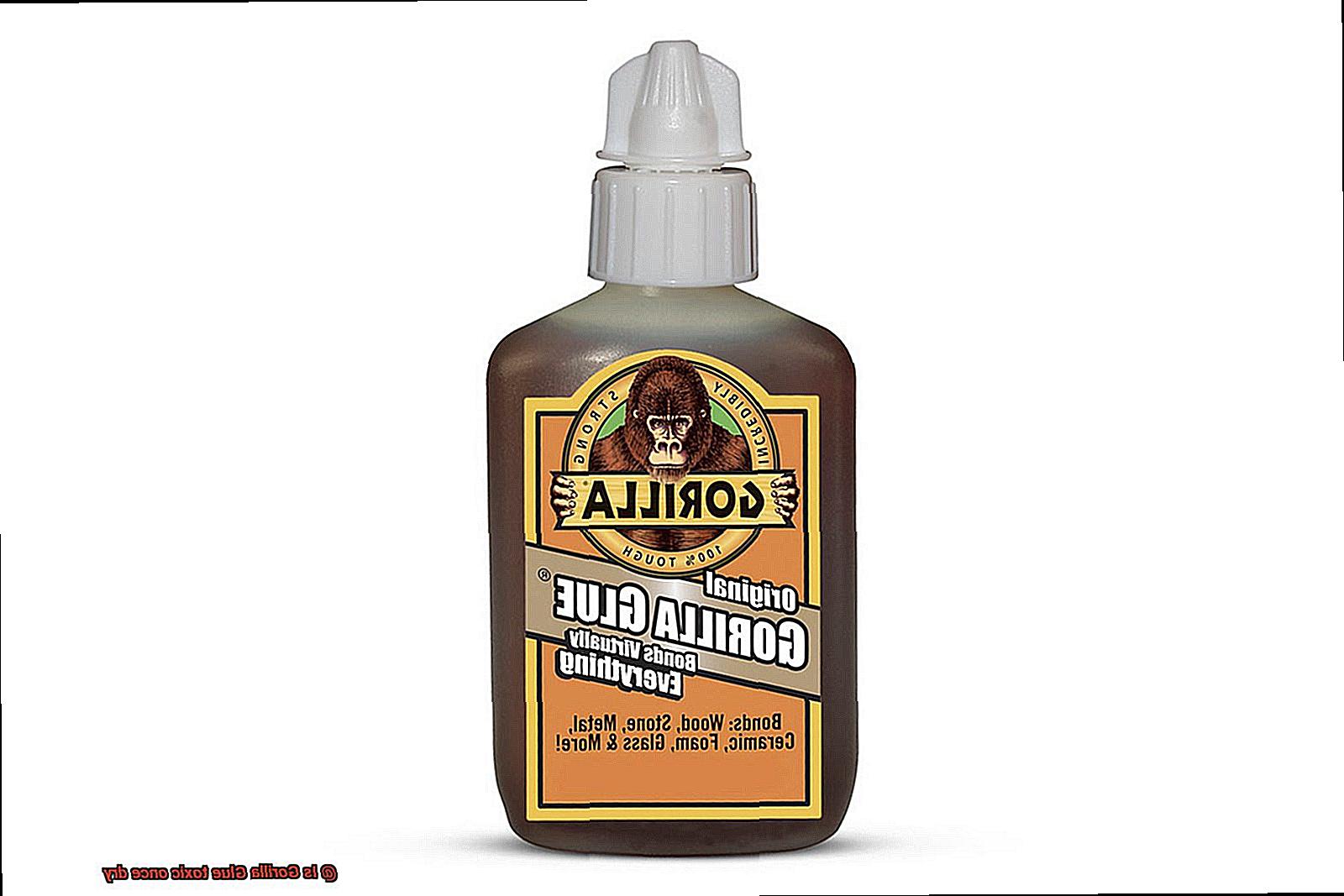
The chemical composition of un-cured Gorilla Glue is a major concern, containing isocyanate compounds. Isocyanates are notorious for causing respiratory issues, skin irritation, and allergic reactions. Inhaling the fumes emanating from un-cured Gorilla Glue can result in respiratory problems such as coughing, wheezing, and shortness of breath. This risk is particularly amplified for individuals with pre-existing respiratory conditions like asthma.
Direct skin contact with un-cured Gorilla Glue can lead to skin irritation, redness, and even chemical burns. Swiftly washing off any glue residue on the skin is vital, and seeking medical attention may be necessary. Ingestion of un-cured Gorilla Glue, although accidental, can cause gastrointestinal distress including nausea, vomiting, and stomach discomfort. In severe cases, urgent medical intervention may be required.
To minimize the risk of exposure to un-cured Gorilla Glue, cautious handling and necessary safety precautions are paramount. Protective gloves should be worn, work areas should be well-ventilated, and direct contact with the glue should be avoided—especially around the skin and eyes. Additionally, pregnant women, children, and individuals with respiratory conditions or chemical sensitivities should exercise extra vigilance when using or encountering un-cured Gorilla Glue.
If adverse health reactions occur after contact with un-cured Gorilla Glue, immediate medical attention is advised to ensure proper diagnosis and treatment. Adherence to the manufacturer’s instructions regarding proper application, curing time, and safety precautions is crucial in preventing potential health risks associated with un-cured Gorilla Glue.
Once Gorilla Glue has fully cured and dried, it is generally considered non-toxic and safe for use. Nevertheless, it is still important to handle cured glue with care, avoiding ingestion or excessive exposure.
Different Types of Gorilla Glue Formulations
Original Gorilla Glue
The Original Gorilla Glue is a versatile formulation that can bond a wide range of materials, including wood, metal, stone, and ceramics. This adhesive is known for its exceptional strength and durability. It is also waterproof, making it suitable for both indoor and outdoor applications. The Original Gorilla Glue contains isocyanates, which can cause skin and respiratory irritation if not used with proper precautions. Therefore, it is important to wear gloves and work in a well-ventilated area when using this formulation.
Gorilla Wood Glue
Gorilla Wood Glue is specifically designed for woodworking projects. It provides a strong bond for wood surfaces and has a short clamp time, allowing for faster project completion. This water-based formulation dries with a natural color, making it ideal for projects that require an invisible bond. Once dry, the Gorilla Wood Glue is non-toxic, making it safe for indoor use.
Gorilla Super Glue
Gorilla Super Glue is perfect for quick repairs and bonding small objects. This adhesive is incredibly strong and dries quickly, forming an instant bond. It works on a variety of materials, such as plastic, metal, rubber, leather, and paper. Unlike some other super glues, Gorilla Super Glue does not contain any harmful chemicals and is considered non-toxic once dry.
Gorilla Construction Adhesive
Gorilla Construction Adhesive is a specialized formulation designed for heavy-duty applications in construction and remodeling projects. This adhesive provides exceptional bonding strength on surfaces like wood, drywall, brick, and concrete. It is known for its high strength and waterproof properties, making it suitable for both interior and exterior use.
Gorilla Epoxy
Gorilla Epoxy is a two-part adhesive consisting of resin and hardener. This formulation is known for its high strength and durability, making it ideal for bonding materials like metal, stone, glass, and ceramics. Gorilla Epoxy dries clear and can be sanded and painted over once fully cured.
Environmental Impact of Using Gorilla Glue
The environmental impact of using Gorilla Glue is a topic that demands attention. When considering this popular adhesive, several factors come into play, including the disposal of containers, the release of volatile organic compounds (VOCs), and the presence of chemicals like polyurethane.
Firstly, we must address the responsible disposal of Gorilla Glue containers. These plastic bottles and tubes, if not properly recycled, contribute to the mounting plastic waste crisis. Taking the initiative to recycle these containers or find suitable means of disposal is paramount. By doing so, we can combat the accumulation of plastic waste in landfills and natural habitats.
Secondly, during application and drying, Gorilla Glue releases volatile organic compounds (VOCs). VOCs are chemicals that evaporate at room temperature, posing risks to air quality and indoor environments. While Gorilla Glue contains low levels of VOCs, it is crucial to use it in well-ventilated areas to minimize exposure. Doing so safeguards both human health and the environment from potential harm.
Furthermore, certain formulations of Gorilla Glue contain polyurethane, a non-biodegradable chemical that persists in the environment for extended periods. Improper handling or disposal can lead to soil and water contamination. It is imperative to manage and discard Gorilla Glue properly to prevent any adverse effects on the environment.
However, it is worth noting that Gorilla Glue offers eco-friendly alternatives through their “Eco-Friendly” line of adhesives. These products utilize plant-based materials and have lower VOC content compared to traditional options. Opting for these eco-friendly alternatives can significantly reduce the environmental impact associated with using Gorilla Glue.
BmBDIe7fB94″ >
Conclusion
In conclusion, once Gorilla Glue has fully cured and dried, it is generally considered safe and non-toxic. The curing process transforms the key ingredients, like polyurethane and MDI, into chemically inert substances. This means that any potential health risks are significantly reduced. However, it is crucial to handle the glue with care and follow the manufacturer’s instructions for safe usage.
During the curing process, Gorilla Glue undergoes a remarkable transformation. It goes through polymerization, bonding, expansion, and forms a bond that is both waterproof and weather-resistant. Once cured, this adhesive becomes incredibly strong and durable, capable of withstanding heavy loads, impact, and vibration.
To ensure safety when using Gorilla Glue, take necessary precautions such as wearing protective gear and working in a well-ventilated area. Avoid direct contact with skin and eyes, keep it away from children and pets, clean up spills promptly, and dispose of it properly. These measures help minimize any potential risks.
While uncured Gorilla Glue can pose health risks due to its chemical composition containing isocyanates, careful handling and adherence to safety precautions can mitigate these risks. Exercise caution when dealing with uncured or improperly dried Gorilla Glue to avoid respiratory issues, skin irritation or burns, allergic reactions or gastrointestinal distress.
Gorilla Glue offers different formulations for various applications. Whether you’re working on woodworking projects (Gorilla Wood Glue), quick repairs (Gorilla Super Glue), heavy-duty construction (Gorilla Construction Adhesive), or bonding materials like metal or ceramics (Gorilla Epoxy), there’s a suitable option available.
Considering its environmental impact is also important. Proper disposal of Gorilla Glue containers helps combat plastic waste accumulation. Additionally, ensuring proper ventilation during application minimizes the release of volatile organic compounds (VOCs). Some formulations contain polyurethane which should be managed and discarded appropriately to prevent environmental contamination. Choosing Gorilla Glue’s eco-friendly alternatives can further reduce the environmental impact associated with its usage.

